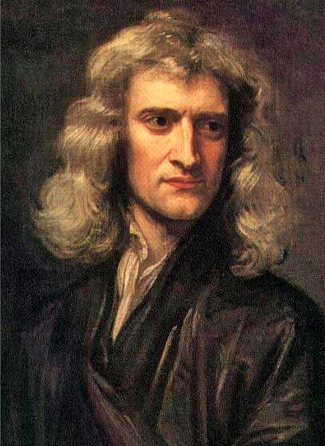| << Chapter < Page | Chapter >> Page > |
By the end of this section, you will be able to:
It was the genius of Isaac Newton that found a conceptual framework that completely explained the observations and rules assembled by Galileo, Brahe, Kepler, and others. Newton was born in Lincolnshire, England, in the year after Galileo’s death ( [link] ). Against the advice of his mother, who wanted him to stay home and help with the family farm, he entered Trinity College at Cambridge in 1661 and eight years later was appointed professor of mathematics. Among Newton’s contemporaries in England were architect Christopher Wren, authors Aphra Behn and Daniel Defoe, and composer G. F. Handel.

As a young man in college, Newton became interested in natural philosophy, as science was then called. He worked out some of his first ideas on machines and optics during the plague years of 1665 and 1666, when students were sent home from college. Newton, a moody and often difficult man, continued to work on his ideas in private, even inventing new mathematical tools to help him deal with the complexities involved. Eventually, his friend Edmund Halley (profiled in Comets and Asteroids: Debris of the Solar System ) prevailed on him to collect and publish the results of his remarkable investigations on motion and gravity. The result was a volume that set out the underlying system of the physical world, Philosophiae Naturalis Principia Mathematica . The Principia , as the book is generally known, was published at Halley’s expense in 1687.
At the very beginning of the Principia , Newton proposes three laws that would govern the motions of all objects:
In the original Latin, the three laws contain only 59 words, but those few words set the stage for modern science. Let us examine them more carefully.
Newton’s first law is a restatement of one of Galileo’s discoveries, called the conservation of momentum . The law states that in the absence of any outside influence, there is a measure of a body’s motion, called its momentum , that remains unchanged. You may have heard the term momentum used in everyday expressions, such as “This bill in Congress has a lot of momentum; it’s going to be hard to stop.”

Notification Switch
Would you like to follow the 'Astronomy' conversation and receive update notifications?